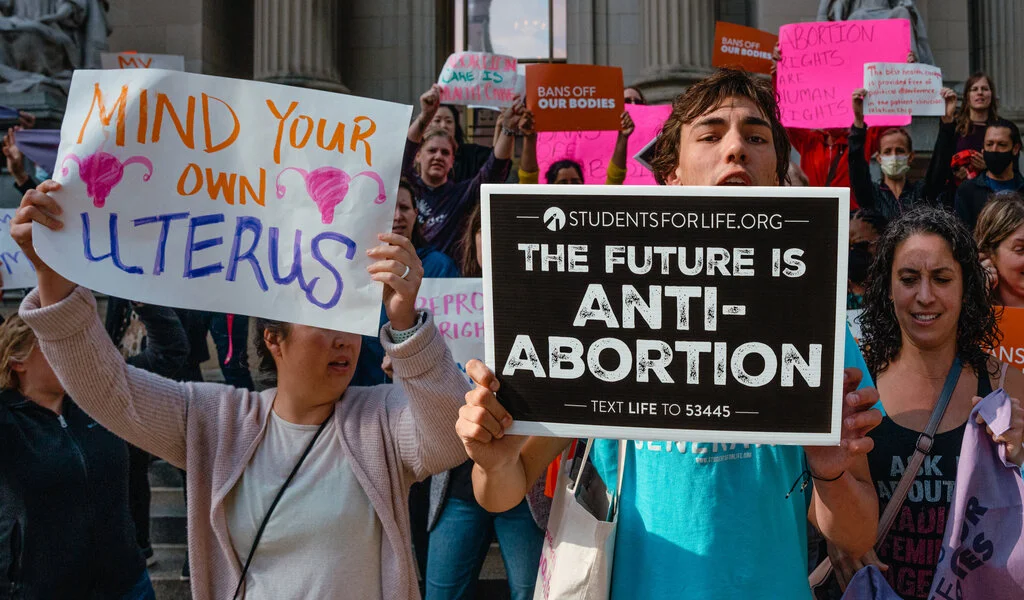(CTN News) – The new constitutional safeguards for reproductive rights and access to abortion in Ohio go into force on December 7, one month after voters overwhelmingly approved them. Nobody knows when or how they will have an effect.
Now that voters have voted, there remain uncertainties concerning implementation because existing litigation against abortion are making their way back through the courts.
The amendment, which protected the autonomy of reproductive decision-making, was ratified by 57% of the voting population.
Supporters of abortion access have now won seven consecutive statewide elections since the Supreme Court decided to eliminate constitutional restrictions.
However, since the amendment that Ohio voters approved on November 7 did not eliminate any current laws, anti-abortion groups have intensified their efforts to persuade Republican elected officials to prolong their attempts to thwart, postpone, or drastically weaken it.
“A lot of that hard work of figuring out what state laws are inconsistent with the amendment and what state laws can remain does tend to devolve to the courts,” commented Laura Hermer, a law professor at Mitchell Hamline School of Law in St. Paul, Minnesota, who studies access to health coverage and care in the US. “It’s hard to believe that the legislature will agree that you’re right. The heartbeat ban will be repealed, among other things.
Republicans hold sway in the state legislature, and their leaders were against Issue 1, the amendment on the November vote. The Ohio Supreme Court, which will ultimately decide cases involving constitutional issues, is likewise dominated by Republicans, with a 4-3 majority.
Several Republican justices have done or said things that have led ethics lawyers and groups advocating for abortion rights to doubt their impartiality on the matter.
Two days after the election, the minority Democrats in Ohio’s House of Representatives introduced legislation to prevent the amendment’s implementation from being done piecemeal.
In addition to other measures, they demanded the removal of the state’s prohibition on abortions following the detection of fetal heart activity, which typically occurs at about six weeks into the pregnancy, along with a 24-hour waiting time.
“There are over 30 different restrictions in place,” stated state Rep. Beth Liston, a physician and co-author of the Reproductive Care Act. “And, frankly, I believe it is critical that we prevent damage from happening in the meanwhile and that we don’t force individuals to go to court for every restriction.”
Allison Russo, leader of the House’s minority, was cautious not to attack the Supreme Court, which has influence over the future of those statutes.
She hoped that they would respect the Constitution and the rule of law.
Last week, Chief Justice Sharon Kennedy had the attorneys for both the state and a coalition of abortion clinics explain to the court how they think the approval of the legislation has impacted a case that has been pending since October 2022 and concerns Ohio’s restriction on most abortions once fetal heart activity is confirmed.
The parties in a protracted federal lawsuit contesting a set of state restrictions imposed on abortion providers’ operations were asked to do the same by U.S. District Judge Michael Barrett the day after voters adopted the amendment.
Among these were a ban on state hospitals forming such arrangements and a mandate that private clinics do the same in order to facilitate the transfer of emergency patients to surrounding hospitals.
The courts have also halted at least three additional abortion laws in Ohio.
Ohio Republican lawmakers have been adamantly opposed to passing legislation to align state law with the new constitutional amendment and have gone to great lengths to thwart its implementation.
Months before their GOP-heavy districts’ primary elections, these lawmakers are under intense pressure from anti-abortion groups to do the exact opposite: either adopt laws that undermine the amendment or use their supermajorities to limit the judges’ ability to interpret it.
In a newly released film, the anti-abortion group Faith2Action claims that the legislature are responsible for reining in out-of-control judges, as stated in the (Ohio) Constitution.
“Therefore, we must urge our elected officials to fulfill their sworn duties, to exercise the authority bestowed upon them by the Constitution, and to prevent pro-abortion judges from using an amendment that fails to cite a single Ohio law to overturn Ohio laws.”
According to the video, the unalienable “right to life” established by the Ohio constitution has been moved to “the people’s elected representatives” since the Supreme Court’s decision to reverse Roe v. Wade.
However, Justice Brett Kavanaugh, who former President Donald Trump appointed, stated in his concurring opinion that constitutional modifications were one of the ways to determine the fate of abortion access in that decision.
The introduction of new rights, both federal and state, statutory and constitutional, is authorized under the Constitution, according to Kavanaugh’s writing.
“However, the Constitution points the way for the people to pursue the numerous forms of democratic self-governance it envisages, including state laws, constitutional amendments at the state level, federal laws, and constitutional amendments at the federal level, in order to establish new rights.”
Republican Jason Stephens, Ohio’s House Speaker, has stated that bills that would limit the authority of state courts will not be considered at this time. The Republican leader of the Senate, Matt Huffman, has stated that, at least until 2024, no one should try to have Issue 1 repealed immediately.
People are also watching Attorney General Dave Yost’s every move.
Yost stated in a pre-election legal study of Issue 1 that the amendment established a new norm for safeguarding abortion access that “goes beyond” the current legal framework established by Roe v. Wade.
A lot of Ohio laws would be nullified and void, and others would be in jeopardy to different degrees, he said.
Yost cannot be bound by such an analysis, according to Hermer, the law professor. However, the remark is helpful for the attorneys battling to have the constitutional change implemented.
She explained that while he is under no obligation to resign, her statement did hint that her statement would make it harder for him to assume such roles in the future.








